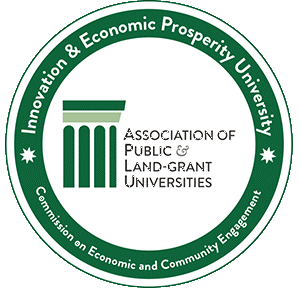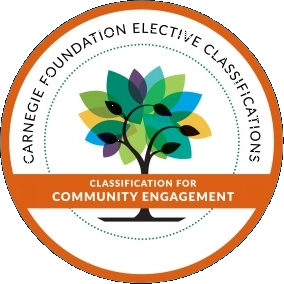Engagement Strategies
Collaboration between academic researchers and industry representatives can be highly beneficial, leading to innovations, enhanced knowledge, and real-world applications. However, these partnerships can be complex. Here are some effective strategies supported by academic literature:
Establish Clear Objectives and Mutual Benefits: Clearly define the objectives of the collaboration and ensure that both parties understand and agree on the expected outcomes. This creates alignment and ensures that the interests of both academia and industry are served (1).
Foster Open Communication and Trust: Building a strong foundation of trust through open and regular communication is crucial. Transparency regarding goals, progress, and challenges helps maintain strong relationships and mitigates potential conflicts (2).
Develop Long-Term Relationships: While short-term projects can yield quick results, long-term partnerships allow for more significant and sustainable outcomes. These relationships provide opportunities for ongoing innovation and learning (1).
Bridge Cultural Differences: Recognize and address the cultural differences between academia and industry, such as differences in pace, goals, and values. A mutual understanding of these differences is necessary for successful collaboration (3).
Leverage Intermediaries: Employ intermediaries on campus including the MSU Innovation Center, which can navigate both academic and industry environments. These individuals and organizations play a crucial role in translating and transferring knowledge between the two sectors (4)
Develop IP and Legal Agreements Early: Intellectual property (IP) and legal issues should be addressed early in the collaboration process and should be done in partnership with the MSU Innovation Center. Establish clear agreements on publication rights, intellectual property ownership, licensing, and confidentiality to avoid conflicts later. This is especially important when considering data ownership and data sovereignty within academic institutions (1).
Measure and Communicate Impact: Regularly measure and communicate the impact of collaboration. This helps demonstrate value to both academic and industry stakeholders and can attract further investment (2).
Engagement Activities
Collaborative Research Projects
- Academic institutions and industry partners can work together on research projects that align with both academic interests and industry needs. This fosters innovation and provides practical applications for academic theories.
- Examples could include the design and implementation of automotive components or testing safety measures within the food industry.
Industry-Academia Networking Events
- Organize events such as symposiums, roundtable discussions, and workshops where industry professionals and academic researchers can connect, share ideas, and explore collaboration opportunities.
Internship, Co-op Programs, and Hackathons
- Offer structured internship or cooperative education programs where students gain hands-on experience in the industry. These programs also allow companies to identify potential talent and share industry knowledge with academia.
- Organize industry-sponsored competitions, hackathons, or innovation challenges where students solve real-world industry problems. These activities encourage creativity and provide networking opportunities.
Guest Lectures and Workshops
- Invite industry professionals to deliver guest lectures, workshops, or seminars in academic settings. This bridges the gap between theory and practice and keeps students and faculty up to date with industry trends.
Joint Publications and White Papers
- Co-author research papers, case studies, or white papers that address current challenges faced by the industry. These collaborations enhance academic credibility and provide industry with innovative solutions.
Advisory Boards and Curriculum Development
- Establish advisory boards consisting of both academic leaders and industry representatives to guide curriculum development and research priorities. This ensures academic programs remain relevant to industry needs.
- Partner with industries to design or update academic curricula. By aligning academic programs with current industry needs, institutions ensure that graduates are job-ready and skilled for modern workforce demands.
Technology Transfer and Commercialization
- Facilitate the transfer of academic research to industry through MSU Technologies. Universities can license their innovations or collaborate with industries to bring research outcomes to market. Make sure to engage MSU Technologies before any publication or other public disclosure of potentially patentable ideas.
Sabbaticals and Industry Fellowships
- Encourage academic faculty to take sabbaticals in industry settings and vice versa. This fosters knowledge exchange, allowing both sides to learn from each other’s environments and approaches.
Sources:
- Kumar, M. J. (2024). Breaking Barriers: the symbiotic interplay of academia and industry in shaping our future. IETE Technical Review, 41(1), 1–2. https://doi.org/10.1080/02564602.2024.2306736
- Scowart. (2023, March 21). Bridging the gap between academia and industry. HIMSS. https://gkc.himss.org/resources/bridging-gap-between-academia-and-industry
- Hemmert, M., Bstieler, L., & Okamuro, H. (2014). Bridging the cultural divide: Trust formation in university–industry research collaborations in the US, Japan, and South Korea. Technovation, 34(10), 605–616. https://doi.org/10.1016/j.technovation.2014.04.006
Alexandre, F., Costa, H., Faria, A. P., & Portela, M. (2021). Enhancing University–Industry collaboration: the role of intermediary organizations. The Journal of Technology Transfer, 47(5), 1584–1611. https://doi.org/10.1007/s10961-021-09889-8









